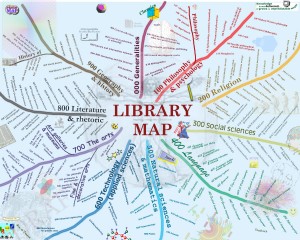This is the first post on the series of blog posts for the SLAIS course #LIBR511. Be warned there are major intersections of tools ahead. 
This course is not just just new to SLAIS but also first offered just as a UBC course more ‘uniformly blended’ — does that make sense?? — delivery plan for coursework.
As a true believer in technology as an enabler it is a quick attraction for me to take the spaces we need to convene at and optimize them in person/online. That’s what I mean by blend. Now since I question if that makes sense… perfectly, ‘intuitively’… Here’s a very rough map to where things are, or will be, as course content is conveyed
As much as possible we will try and post lectures open to this blog (and or to slideshare). There is a sincere interest in publishing materials open… And the demand for the learning is high at this change time in library schools, international standards and library systems/sites. We are first available to respond to the discussion slide content elicits to our Face to Face students of SLAIS. But ‘distance audit students’ are always welcome. And might like to join the flow at #libr511 on twitter (and/or rss on the blog, etc.)
The blog will also do some relinking driven by referrals to content on the open web of similar ilk. Blog posts of the ‘great thinkers discussers’ of our time this business cycle for cataloguing will be remarked on no doubt as applicable. There is simply great stuff out there in the community we will not class it anecdotal. It is the very nature of the the work of cataloguing and classification to congress, meet on standardization and adjust on style, so we want to create a simple hub for topics that are trending. These will also index at the course instructors’ twitter feeds.
More durable curated content of the learning sources for this course’s iteration will be posted to UBC WIKI. What is to be expected there is stuff that’s ‘more textbook.’ Content potential to be applicable to other SLAIS cataloguing curriculum (and perhaps beyond, WIKI it up!, see where is goes) are what’s in mind typically things like infographics (flow charts, diagrams, etc.) glossary terms, further readings, related references and so on.
Some content will be published in the closed arena of course software, on libr511.pbworks.com, items to expect there are internal links to compose the coursework traverse, one-stop-shop for grading, housekeeping items like due dates, the course syllabus, calendar items, etcetra.
So for this go around this is how we hope to manufacture the knowledge to complete LIBR511. To step up to the tools, principles and procedures to make any library selected item accessible. We’ll tell you right now it is not a highly intuitive pursuit. Cataloguing and Classification while often inate to the human endevor is at best contrived, at least convoluted. We want to start quick to harness the logic and demand of creating descriptive information, access points and performing subject analysis/arrangement to your knowledge base. See the full schedule to know how we will step through.
Could be simpler? Maybe next time.. ;>



